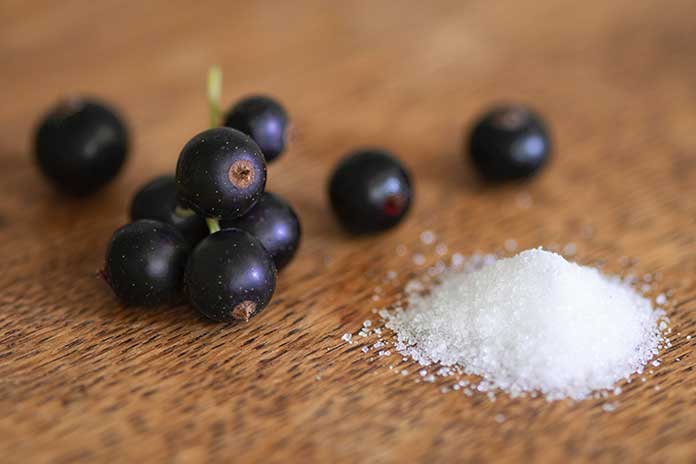We consume between 8 and 12 grams of salt daily, while the recommended amount is around 5 grams. We explain how to reduce the doses.
Table of Contents
Lemon Juice To Replace Salt
The salty neighbor receptor is the acid receptor: the more acidic you eat, the more your brain will have difficulty identifying salty tastes. This is why it is exciting to replace salt with lemon.
Excess Salt: What Health Risks?
Salt is the number one enemy of our hearts and arteries. Consuming too high a dose causes blood pressure to skyrocket and causes hypertension. Stiffness of the arteries increases the risk of cerebrovascular accident (CVA), heart failure, angina pectoris, myocardial infarction, renal failure… The list of consequences resulting from overconsumption in the long term is pervasive. Excess salt also promotes water retention, lymphatic problems, weight gain, and orange peel skin.
How Do You Know If You Have Too Much Salt In Your Body?
If it is essential for the body, excess salt is dangerous for health. There are signs sent by the body to inform you that the dose is exceeded. First of them? An increased feeling of thirst! The brain sends this information to restore the body’s water balance.
Similarly, excess salt increases the risk of bloating by approximately 27%, according to a study published in the American Journal of Gastroenterology… According to the researchers, salt modifies the intestinal fermentation of fibers.
Another sign that you’re taking in too much salt? Water retention will generally result in a feeling of swelling and heaviness. Finally, too much sodium in the body also increases blood pressure (pressure that reigns inside the arteries), which forces the heart to work harder.
How To Reduce Your Daily Salt Intake?
Our body needs salt to function, but we can slow down by changing our eating habits. Reducing the intake and letting nature take its course gradually is better. Because once the bad habits are lost, you won’t be able to bear having too much salt under your palate!
Choose Your Mineral Water Carefully!
Apart from Salvetat, Perrier, and Vernet, to a lesser extent, sparkling waters contain much more sodium than still waters. Absorbed in large quantities, they contribute to bone demineralization, which is harmful in the event of a problem of osteoporosis at menopause. It is, therefore, better to choose flat, low-mineralized water daily. Among the big brands, choose Mont Roucous, Volvic, Valvert, Evian, Thonon, and Wattwiller. Regarding retail water, please look at the labels to find their sodium content and choose the lowest.
Avoid Salted Meats And Smoked Fish!
In addition to the animal fats present in large quantities and harmful to the cardiovascular system, cured meats contain a lot of salt. Without completely depriving yourself, it is better to consume it twice a week at most, without exceeding four to five slices. Be aware, however, that you can eat white ham because this flagship charcuterie product does not fall into the same category. Beware also of smoked fish containing three times more salt than fresh or raw marinated fish.
Also Read: Food Reeducation: How To Do It And Lose Weight In A Healthy Way
Avoid Industrial Ready-To-Eat Meals!
Ready-to-use sauces, instant soups, and industrial-ready meals should appear on the menu as little as possible. Because they are generally much more loaded with salt than homemade cooking, in particular, to enhance the flavors and prolong the conservation. Check the sodium content on the labels and favor products that contain the least: to obtain the amount of salt present in a product, multiply the amount of sodium (in grams) by 2.54.
Opt For Fresh Fruits And Vegetables!
Eating fruits and vegetables in large quantities preserves our arteries. They are rich in potassium and partially neutralize the harmful effects of sodium. But beware of canned vegetables! It is indispensable to rinse them to eliminate the salt needed for this type of preservation.
In the absence of fresh products, it is better to favor frozen vegetables: they do not contain salt, and their taste is generally closer to that of fresh vegetables. Our favorite low-salt product! Its 3.1 mg per liter of sodium is one of the mineral waters with the lowest salt content. Suitable for infants and pregnant women. Mineral water, Mont Roucous, €2.25 for a pack of 6 x 50 cl. In a large area.
These Little-Known Salts To Include In Your Recipes!
Less known, colored salts give our dishes different flavors. Here are three to discover…
- Gray: the most classic! It is natural sea salt when it has just been harvested. It has not been refined, unlike white salt. Rich in iodine, its gray color indicates that it contains many nutrients like calcium, potassium, and magnesium. Gray salt has more flavor than white and can be replaced daily. It thoroughly salts all dishes before and after cooking. It is, therefore, optional to use a lot. To be tried on: grilled fish, pan-fried meat, stew, free-range chicken cooked in a salt crust, salads, and all your daily preparations.
- Pink: the sweetest! Extracted by hand in the deposits of the Himalayan mountains, this rock salt has the particularity of being pure. Protected from external pollution, it contains many nutrients such as potassium, copper, or magnesium. It is its high iron content that gives it its pink hue. From a taste point of view, this salt is delicate and sweet. It is often used at the end of cooking, before serving. Try it on: braised scallops, jacket potatoes, steamed vegetables. Enjoy the crunch of these crystals on a grilled steak or a fillet of fish.
- Ochre: the most amazing! Originally from the Pacific Ocean, it is smoked for long hours over alder or beech wood. Also called Viking salt, great chefs widely use it. As its name suggests, this smoked salt has the particularity of adding slightly smoky and three original flavors to your dishes. To try on: a salmon steak, a cheese soufflé, seasonal vegetables, a potato gratin, tofu, or even in vegetable soup. You can also use it to flavor shrimp or pan-fried prawns. Also delicious on a simple slice of butter.
What Can I Substitute For Salt In The Kitchen? Nine Alternatives To Know!
Lemon Juice To Replace Salt!
The salty neighbor receptor is the acid receptor: the more acidic you eat, the more your brain will have difficulty identifying salty tastes. That is why lemon juice is exciting in replacing salt with lemon.
Apple Cider Vinegar Is The Perfect Substitute For Salt!
The Result of the fermentation of apple juice, cider vinegar, as for lemon, will by its acidity, disturb the brain, which will assimilate cider vinegar to salt! It can be used in vinaigrette to flavor pasta, water, or even rice.
Ginger To Replace Salt In The Kitchen!
The peppery, camphorous, and spicy flavor of ginger is used in many dishes and drinks to enhance the taste.
Seaweed Is The Perfect Ingredient For Salting Your Dishes!
Much used in Asian cuisine for seasoning, seaweed is perfect for replacing salt. To be enjoyed in the form of leaves or flakes.
Gomasio Is The Perfect Japanese Condiment To Replace Salt!
This Japanese condiment is a mixture of sesame seeds (95%) and sea salt (5%). Although it contains salt, we take full advantage of the nutritional qualities of sesame seeds: rich in calcium, phosphorus, and magnesium. This hazelnut flavor goes well with all recipes.
Herbs And Spices To Replace Salt!
Herbs and spices have the same advantage as salt: they enhance the taste. We only use a dozen in the kitchen, while we have several hundred at our disposal. Do not hesitate to do culinary tests to take advantage of their health benefits. Chilli, for example, helps burn fat! But keep in mind that it’s all about quantity. If you use salt in cooking, don’t put it on the table afterward.
Horseradish Is The Alternative To Spice Up Your Dishes Without Salt!
Horseradish will spice up your dishes without salt. It is similar to mustard and remains a good flavor enhancer that will go well with all your words. This spice has antioxidant, anti-inflammatory, and antibacterial properties.
Celery Salt!
This substitute comes from dried, dehydrated and powdered celery. She was making it home and can replace salt and is suitable for a salt-free diet. Celery is much healthier than salt and has many nutritional benefits.
Dark Chocolate!
As surprising as it may seem, dark chocolate’s bitterness can bring out the flavor of a dish. Prefer unsweetened cocoa powder or two squares of bitter dark chocolate. Add them at the last minute to avoid altering the taste. Chocolate goes perfectly with fish or meat.
Also Read: Epsom Salt: This Effect Will Impress You


